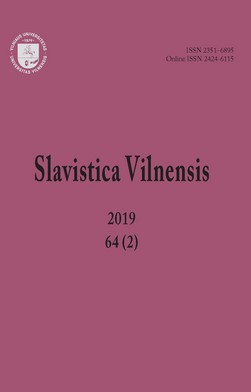Phonetische Konvergenz in einem Teil Südostlitauens
Phonetic Convergence in one Southeastern Part of Lithuania
Author(s): Nijolė TuomienėSubject(s): Theoretical Linguistics, Phonetics / Phonology, Comparative Linguistics, Western Slavic Languages, Eastern Slavic Languages
Published by: Vilniaus Universiteto Leidykla
Keywords: Lithuanian borderland areas; languages contacts; code-switching; local variant of Polish; Belarusian dialect poprostu; phonetic convergence;
Summary/Abstract: The present article addresses the principal phonetic phenomena of the languages used in borderland areas and their interaction. It analyzes of dialectological and sociolinguistic material collected from the end of the 20th century and the beginning of the 21st century from three points in the Šalčininkai district. It analyzes the phonetic convergence of the dominating local language varieties — Belarusian, Polish and Lithuanian — and establishes the tendencies of this process. The situations of natural communication in the context of code-switching are analyzed in the study: when the speakers are fluent and use several languages at the same time by actively switching between them in conversations. The research is, based on the theory proposed by Valerijus Čekmonas, the researcher of the interaction of languages and Slavicist: the speaker switches between languages according to certain rules, which can be described by algorithms. Based on this method of algorithms, the study reveals the phonetic tendencies and proves a very important role and influence of the now passively used Lithuanian language on the articulation of contemporary Slavic languages. The research showed that the reasons of convergence of phonetic phenomena of the language varieties functioning in the borderland areas are mainly sociolinguistic. After comparing the phonetic peculiarities of local Polish and Belarusian dialects, it turned out that the phonetics of both dialects is essentially the same. The informants pronounce the soft consonants used in the local Lithuanian dialect in the same way as they are pronounced when speaking local Slavic dialects. The cases, which are not typical of Belarusian and Polish dialects, when consonants are intensively confused, were recorded; it is likely a feature of the Lithuanian substratum.
Journal: Slavistica Vilnensis
- Issue Year: 64/2019
- Issue No: 2
- Page Range: 114-127
- Page Count: 14
- Language: German

